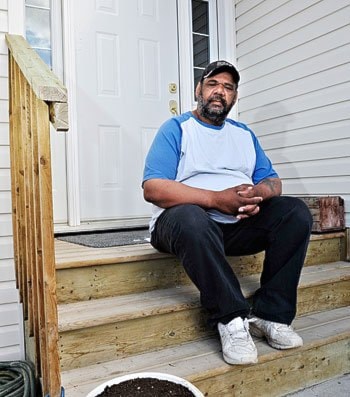Whistle Bend was supposed to be one of the most sustainable subdivisions North of 60.
It was to have plenty of green space. Dense, compact housing. And it was to feature geoexchange technology, literally heating homes by sucking energy stored in the ground.
Today, the only suckers are those who bought into the hype.
After last week’s Yukon Environmental Socio-economic Assessment Board meeting examining the subdivision, its first phases now look like any other Whitehorse community.
And the first 918 residential units won’t feature any geothermal heating.
“(Without geoexchange) there’s nothing particularly sustainable that differentiates this from any other community in Canada,” said one resident.
It wasn’t supposed to be like this.
At a public charette held by Whitehorse planners in 2006, energy conservation, particularly geothermal energy, was highlighted by citizens as a potential clean energy source for the community.
Shortly after that charette, in the spring of 2007, the city hired Alberta-based EBA Engineering Consultants to gauge the feasibility of geothermal energy in Whitehorse.
That study concluded the city’s geothermal potential was “good.” The report won the company a 2008 Consulting Engineers of BC Award of Merit.
Geothermal energy was again flagged as a potential energy source for Whistle Bend in a public charette in October 2007, shortly after EBA’s report came out.
Whitehorse was featured as an example for other communities South of 60 to do geothermal energy at a Building Sustainable Communities Conference in Kelowna in 2009.
The following year, the city again hired EBA to carry out a $241,000 study to pin down how geothermal energy could be incorporated into the Whistle Bend subdivision.
Specifically, engineers explored implementing geoexchange technology, low-grade energy from the earth that is moved to the surface using heat pumps.
Half that study was paid for by the Federation of Canadian Municipalities’ green municipal fund, the Yukon government contributed $96,400 and the city kicked in $24,100.
“This is an exciting new approach for the city, “said Mayor Bev Buckway in October after accepting the federation’s money. “Using geoexchange technology follows the sustainable vision set out in the planning process for Whistle Bend.”
But even as Buckway was praising the technology, city planners were shelving plans to use it for phase one and two of Whistle Bend.
This, despite the fact using it in phase one and phase two of the project is the “preferred option,” according to EBA’s report.
It was recommended based on investment rates of return over a 50-year period, which averaged out to about seven per cent.
The study estimated the cost of geoexchange for the first two phases at $15.2 million and $18.8 million, the latter included the use of a sewer heat-recovery system.
If geoexchange had been included in phase one and two, it would have been “one of, if not the, largest geoexchange-based, district-energy system installations in northern Canada,” according to EBA’s August 2009 final report.
At the assessment board meeting last week, planners cited capital costs and insufficiently detailed plans as reasons why the city couldn’t use the geoexchange system.
When EBA did its feasibility study, the city only had density approximations to offer the consultants and not detailed lot information, said planner Kinden Kosick.
“At this point it’s too late - well it’s never too late, but it has become a greater cost to put in district energy for phases one and two,” he said.
“To get district energy off the ground at this point we need high-level commitment from the Yukon government and city council and we need to find tens of millions of dollars ... not an easy task.
“We’re still looking at doing it in the rest of the neighbourhood though.”
But that promise wasn’t enough to appease residents at the meeting.
“When we started this process, the idea was to make (Whistle Bend) a unique, eco-friendly community,” said one frustrated resident. “It was supposed to be the star of the North.
“If we don’t make it part of (phase one and two of the) project, then why am I going to live there? Phases three and four are 30 years down the road, and I don’t have time to wait.”
So why did the city spend time and money researching geoexchange technology before it had some capital and lot details in the bag?
It’s mostly about timing, said Kosick.
“At the time, we didn’t realize (what was required),” he said.
“Partly it was our inexperience with geoexchange technology and partly it was that we didn’t exactly know what information was needed to do the detailed work.”
The city says it will continue to study options for geoexchange in phases three and four.
Contact Vivian Belik at
vivianb@yukon-news.com
